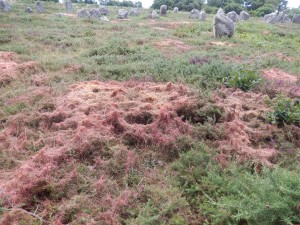
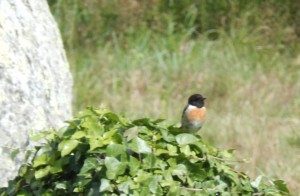
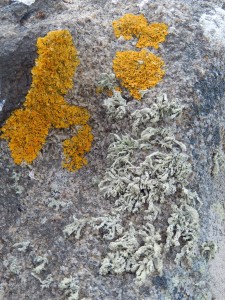
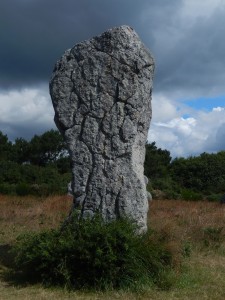
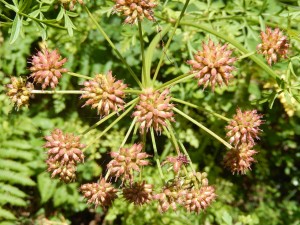
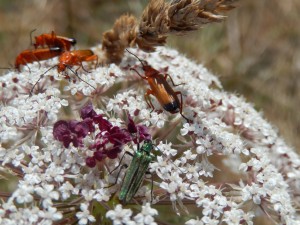
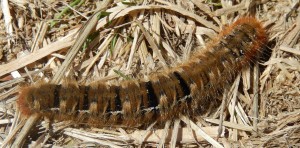








In St Malo, even the soft toys are marine invertebrates: lobsters and crabs, dressed in nautical striped shirts. The people are called Malouines: Malvinas in Spanish. The name is from Saint MacLaw, presumably a Scot, though that might not be sufficient grounds to claim that Las Malvinas, the ‘St-Maloers’ – better known as the Falkland Islands – are therefore inherently British.
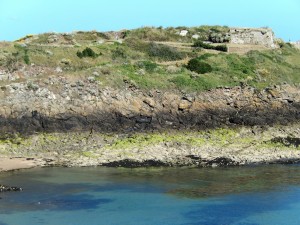
Around the walls of the old town, black redstart, house sparrow, jackdaw, chaffinch, rock pipit, herring gull, lesser blackback, black-headed gull, oystercatcher, swift.
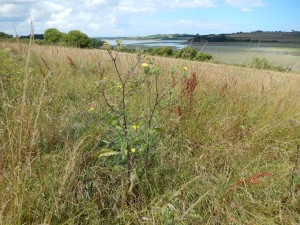
It was a pleasure to do the butterfly transect today. Even before I reached the Gunnersbury Triangle, I saw a Red Admiral in the street.
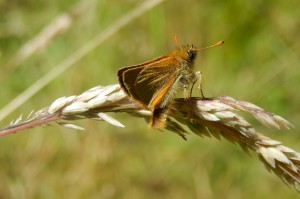
Once inside, I was rewarded with several very small, very active Skippers with their jittery, chaotic, jinking flight. It is hard enough to follow with the naked eye, close to impossible with binoculars, and presumably difficult for bird predators (as well as the reason for the name Skipper). When one finally did perch, it was clear it was a Small Skipper, as the Essex Skipper (not limited to that county) has more black on its antenna tips.
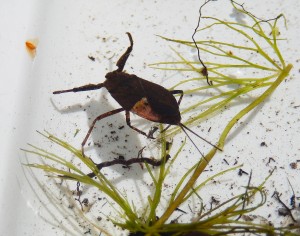
Down at the pond, a primary school class and a group of enthusiastic teachers were catching Ramshorn Pond Snails, Newts, Dragonfly larvae and this fine Water Scorpion.
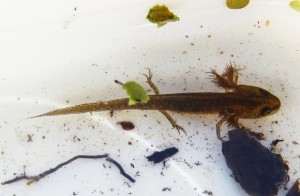
This small newt has nearly completed its metamorphosis from a tadpole. It has four legs, the hindlegs so thin they were nearly invisible to the naked eye, but its gills are still large, feathery and projecting from the sides of the head.
One of the large handsome hoverflies that frequents woodland glades came into the hut. This species has the front of the abdomen pale yellowish but no other stripes; the pale area seems to glow when the fly is hovering, presumably making it look sufficiently black and yellow to warn off predators (of course, many bees are black).
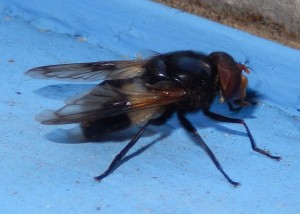
Finally, here’s a Strangalia maculata, one of our most handsome longhorn beetles. Nearby was another Red Admiral.
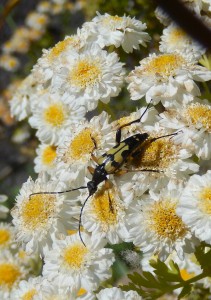

Thursley Common on a sunny July day can shimmer with the wings of dragonflies. Today, hundreds of Keeled Skimmers, joined by plenty of other species large and small – from the mighty Emperor to the dainty Small Red Damsel, made the air seem to sparkle as brightly as the water beside the boardwalk. There were Keeled Skimmers perched alertly on stalks, ready to spring into the air at an instant’s notice; Keeled Skimmers in tussling pairs, their wings rustling and scuffling as they clashed in brief, brutal territorial disputes; Keeled Skimmers in groups of four or five, dashing and swerving over the water; Keeled Skimmers over every pond, bog pool, and lakeside.
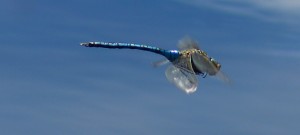
Over one quieter pool, an Emperor Dragonfly patrolled in more stately fashion, almost hovering, drifting forward slowly as if a helicopter pilot was holding the machine’s collective drive stick just a little forward of the hover position, its striped blue tail gleaming in the sun.
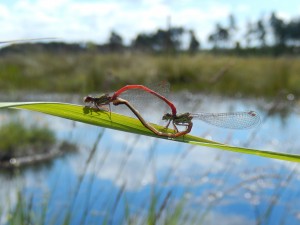
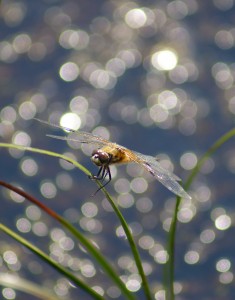
Many of the Odonata were busy laying eggs, from the Skimmers to the damselflies. One or two Black Darters were about: they can be here in large numbers later in the season.

On the sandy heath, the Sand-Wasp Ammophila sought her insect prey, her distinctive shape almost dragonfly-like with an extremely elongated red waist leading to a plump ‘tail’ to her abdomen.

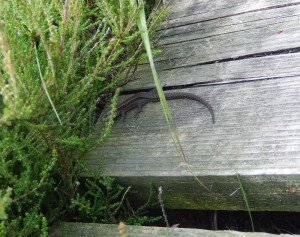
Overhead, a Hobby dashed and stooped, handsome through binoculars, moustachioed, spotted below, its long scything wings like a giant Swift easily outpacing the fastest dragonfly. Below, a lizard rested unobtrusively at the edge of the boardwalk, ready to scuttle into the heather at any threat; another a yard further on. A Reed Bunting rasped out its short scratchy song, skreek, skreek, skrizzick. A Curlew called once; a Skylark soared invisibly high into the blue, singing as if John Keats were at hand to report on the beauty of its song.
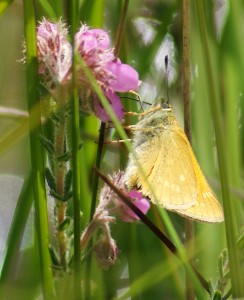
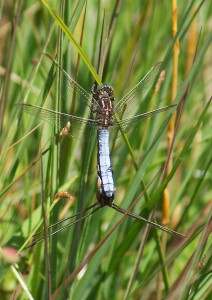

It was a delight to be able to take some time in the almost miraculously preserved Lake District, the landscape seemingly unchanged from a century ago. The real changes are in the main carefully hidden away: cunningly concealed caravan parks, sensitively expanded hotels and guest houses, visitor attractions built of grey slate and tucked behind walls or trees. One change cannot be hidden: the narrow lanes carry twice, no, four times the traffic of thirty years ago, and it travels at murderous speed. Some of the young men in their shiny red cars race along the few straights and around blind bends, trusting and assuming (without thought) that the other driver knows the road as well as them, has the same speed of reaction, and will have space to pass. Given that the other driver may well be a foreigner in a slow, bulky camper van, or old and frail, or talking on the phone, or tired, drunk or just not quite as perfect as the young bloke in his speed-wagon, this may not be justified. Pedestrians and cyclists, too, take their lives in their hands. The park authority ceaselessly balances the conflicting pressures: facilities for the millions of visitors, landscape, wildlife, jobs, houses, schools and shops for the residents, car parking (as pricey as any city in the most popular spots). They have done an admirable job.
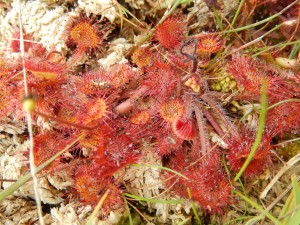
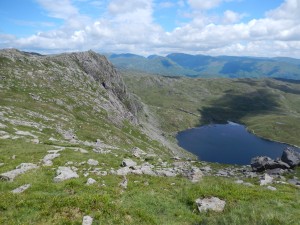
The marvellously clean landscape of rock, grassland and glacial lakes appears so fresh on a fine day that it hardly seems feasible: it is sharper than a diorama illustrating geomorphology, and much more beautiful.
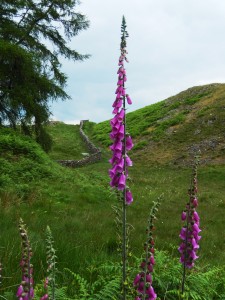
Sometimes the common flowers surprise us with their beauty. These foxgloves stood proud and tall in their hummocky landscape.
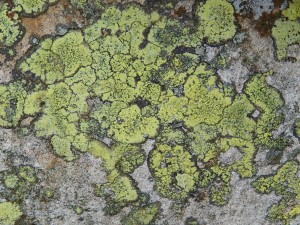
The lime-green of the geographic or map lichen forms delightful maps of imaginary continents on the grey slate.
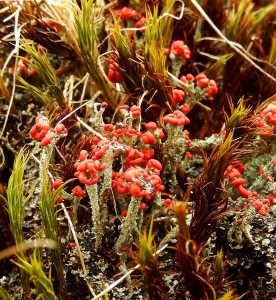
The artist Maurits Escher admired the apparently simple form of mosses and ground-living lichens like the gorgeously coloured Cladonia floerkana: but he quickly realized how complex they were when he started to draw them.
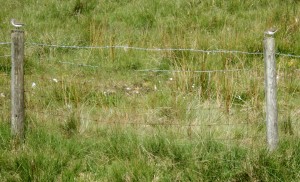
I was happily surprised to see these Common Sandpipers flying about and calling loudly: I really hadn’t expected to see them away from both forests and sizeable bodies of water: clearly, they don’t need much.
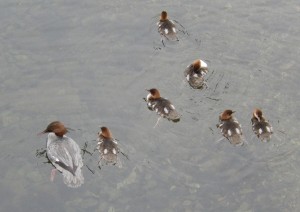
The Goosander is almost a rarity, breeding in not many thousands in Britain; but it is not shy, as this family seen from the bridge over the Rother in Grasmere demonstrates. The ducklings showed off their striking spotted pattern.
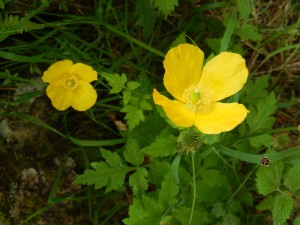
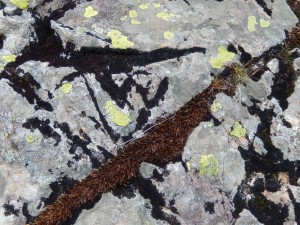
On Yewbarrow in Wasdale, we enjoyed the views of lake and mountain, and glimpsed a Golden-Ringed Dragonfly: not really mistakable for anything else, the size of an Emperor Dragonfly and strikingly black-and-yellow with incomplete rings.
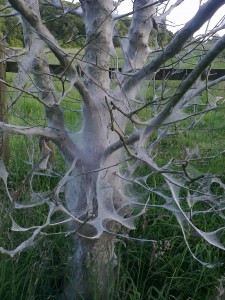
Back at our guest house, Marsh Tits visited the bird feeders, almost as relaxed as the resident Blue Tits. On the Cumbrian Way, walking down to the pub at Skelwith Bridge, we saw this extraordinarily ghostly tree, leafless and covered all over with silk, lightly decorated with caterpillar frass. The poor tree had been totally defoliated by the tent caterpillars. Since I doubt the Gypsy moth has reached the Lake District yet, this might be a Processionary moth, perhaps.
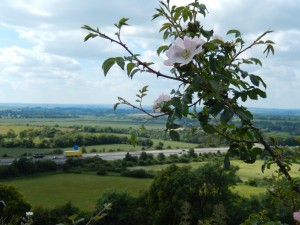
Aston Rowant National Nature Reserve is on the scarp of the Chiltern Hills, between Watlington and Chinnor. That places it at the western edge of the relatively hard rock of the Cretaceous period – Chalk – overlooking the softer rocks of the Jurassic period – the Oxford Clay. It has some fine chalk grassland, once a widespread habitat, though most has been lost to the plough, woodland, or development. And it has a rushing noisy motorway right through its middle, complete with a deep cutting hacked through the chalk escarpment. Here’s a short video clip to give you the general idea.
I visited in hope of seeing some orchids, and was delighted to find not only Pyramidal Orchid and Bee Orchid, but some seemingly hybrid plants with a few looking very close to ‘Wasp Orchid’, a variety of the Bee Orchid species.
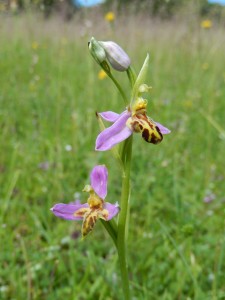
The site is carefully managed by English Nature to conserve the plants and animals of this special habitat. They employ a team of 24-hour all-terrain woolly mowing machines to keep the grass sward properly short for the more delicate flowers, such as the orchids, the Cistus rock rose, the delicately aromatic tufts of wild thyme, the eyebright, salad burnet, and many others.

The flowers in turn support a wealth of bees, butterflies including (those that I saw) Meadow Brown, Small Heath, Marbled White, Speckled Wood, Brimstone, Adonis Blue and Small Tortoiseshell, as well as day-flying moths like the Cistus Forester and the Six-Spot Burnet.
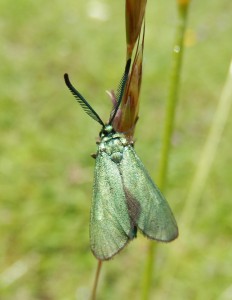
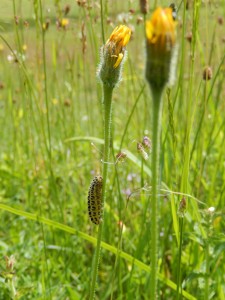
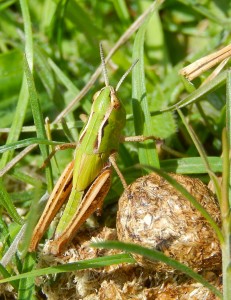
The delightful grassland is scored by ancient trackways, and the pre-Roman Ridgeway runs along the bottom (surprisingly) of the slope. Which brings us back to the modern trackway, its constant roar doing its best to drown out the bleating of the sheep and the screams of the red kites. The zizz of the grasshoppers is not lost entirely, but the quiet contemplation of them is certainly a little difficult.
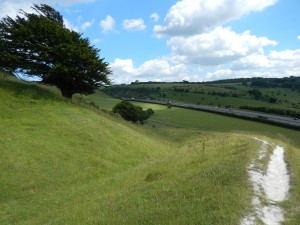
So, what are we conserving? Beautiful nature, ancient landscapes, specific habitats, individual species, an experience for the public, material for scientists to study? As the photograph shows, humans have cut trackways through the chalk for thousands of years: it’s just that somehow, an ancient trackway seems a little, well, quieter than the modern variety. The most obvious effect is on human visitors: the place isn’t quite the escape from modernity that it might be.
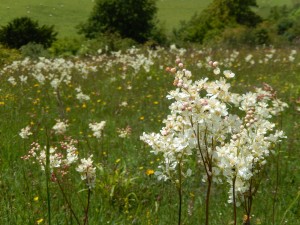
Beautiful but brutalized: perhaps meadowsweet waving in the breeze under the sunshine on the M40 is the perfect icon for the Britain of Cameron (and Blair before him). We need transport infrastructure, heaven knows, just as we need sufficient housing and everything else. And yet, a reserve where visitors can actually hear the birdsong (and record it if they want to) would be nice, even if the birds do manage to reproduce somehow. Are they affected? They easily might be. So what is a nature reserve for? If it’s a place where a teacher can bring a class and say ‘this is what the countryside was like x years ago’, then Aston Rowant fits part of the bill. Realistically, what do we want our world to be like? Just with one or two pretty bits to conserve the orchids, the cameras judiciously avoiding getting trucks in the background, the video having to dubbed with birdsong and grasshopper stridulation in the studio? Can we afford something more complete, given all the other pressures on the budget? Not easy to say, I think.
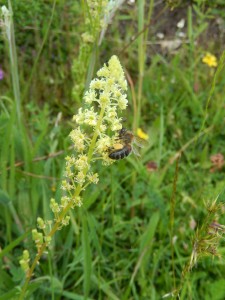
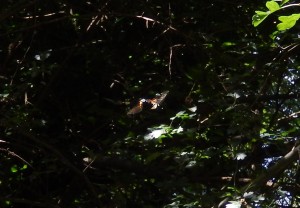
An English Summer is, as the saying goes, three fine days and a thunderstorm. Or, going out with sunhat, suncream, sunglasses… and a pullover and raincoat, just in case. Today it started out cold with a chill north-north-easterly wind, but quietened down and became rather too hot to work comfortably.
A tree had fallen across the glade in the Gunnersbury Triangle where the beekeeper is going to station one of her hives. I soon threw off my pullover, and my rainproof jacket never left my rucksack. The soft willow wood was no trouble to saw up, and I dragged the branches to the dead-hedge without much effort. A lot of small holm oak, an invasive alien species from the Mediterranean (think Ligurian coast) has sprung up from old stumps, so they joined the pile. A Blackcap sang to me while I worked.
The butterfly transect revealed very little, though some Commas are encouragingly laying eggs. As for other insects, several species of hoverfly, from tiny and slender to large wasp mimics and a fine one largely black, perhaps a bee mimic, were active. They hover, perch and sunbathe, or dash and chase each other (specially the large black ones) aggressively. I had fun trying to photograph one actually in the air, you can see the atmospheric but not very useful result above. It does give something of an idea how much they whiz and dash about, hovering always on the qui vive.
Ragwort is getting more and more abundant on the reserve; today, Helen spotted some tiny (probably first instar) Cinnabar Moth caterpillars on one of the plants; an adult visited me while I worked.
The Peacock Butterfly caterpillars of last week seem all to have pupated in hiding somewhere; there are quite a few younger ones still on the stinging nettles, so there will be at least two lots of adults.
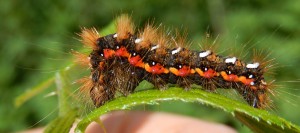
We found a Knot Grass moth caterpillar (a Noctuid moth) on a bramble. It is hairy and aposematic, with brown hair but without the four long brown ‘shaving brush’ tufts of the Vapourer moth caterpillar (a Lymantriid or Tussock moth), which we’ve also found here.
But perhaps the insect I was happiest to see was this young Bush Cricket, resting on a flower for no particular reason, and taking a risk as its fine spotted green camouflage was totally compromised by its white and yellow flowery background. It must be the first one I’ve seen this year.
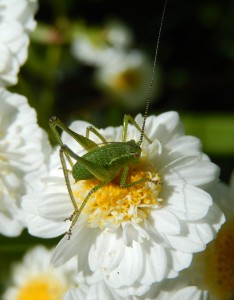
I have always loved natural patterns. The bark of this Aspen tree looks almost as if it encodes symbols in some cuneiform notation.


Ragwort is at full height now and will soon be flowering. A few adult Cinnabar Moths are about; they will mate and lay eggs on the ragwort, which is in several places around the reserve, and then we will have the fine black-and-orange banded caterpillars in quantities, eating the Ragwort to pieces. They are poisonous with alkaloids taken up from the plant, so few predators eat them: an exception is the Cuckoo, which seems able to cope with the chemistry.
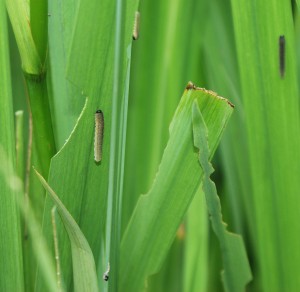
Iris sawfly caterpillars are starting to chew inroads into the spearblades of the Yellow Iris; they are rather like moth caterpillars, but with rows of little dots on their backs and different numbers of prolegs.
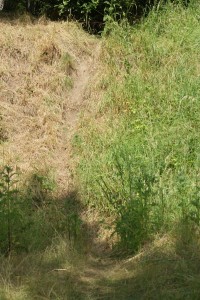
It looks as if there are young foxes about; a very well-worn run goes straight up the grassy bank into the bushes, and the grass nearby is much trodden down.

The new buildings towering over the reserve are approaching their final shape; it will be a relief when the roar of heavy engines and the squeal and clatter of caterpillar-tracked bulldozers subside into history. There was a horrible accident on the building site this week when something fell from a crane; three workers were injured, one seriously, and the air ambulance arrived, followed by the health and safety inspectors.
I had the good fortune to get down to West Wiltshire in hot if sometimes humid summer weather.
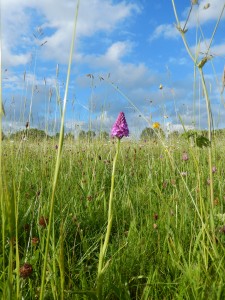
It was a pleasure to find the Pyramidal Orchid in a flowery meadow near a town: despite the dog-walkers, the increasingly uncommon flowers were clearly spreading from a small patch across the meadow, which is mown annually.
Less pleasantly, there were next to no insects pollinating the flowers: we saw one Small Tortoiseshell, a fly or two, and one (white/buff-tailed) bumblebee. It was a stark contrast to the masses of bees and beetles I’ve seen on the reserve in London. Of course, in London there is now very little use of pesticides, and basically none on an industrial scale.
This year (2014) does seem to be particularly poor for butterflies. It was an extremely warm winter and a very wet and windy spring, so I wonder if the result has not been a bad spring for insect pests … and perhaps, whether England’s farmers have not sprayed insecticide especially heavily? It’s a question that could clearly be answered by someone. If the answer is yes, then our ‘useful insects’ have suffered very heavily as a consequence.
The next day we went to Cley Hill, a western outlier of the Salisbury Plain chalk downs, sticking up above the plain below the chalk escarpment.
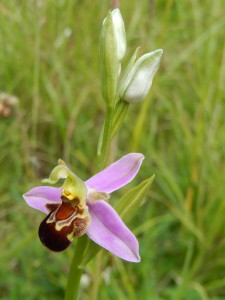
In the short grass, full of lovely flowers – Sainfoin, Milkwort, Horseshoe Vetch – were Bee Orchids, and happily both bumblebees in this special place protected by the National Trust and Burnet Moths – mostly Five-Spot Burnet, with some Transparent Burnet too, quite a treat.
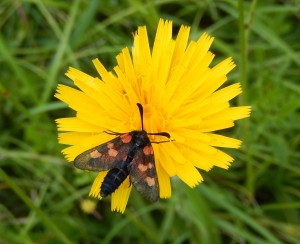
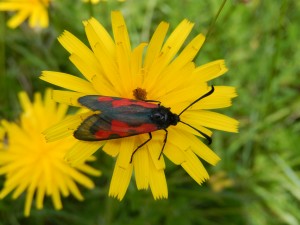
On the top of the hill, above the Iron Age earthworks, we came across a group of about five Wall Brown butterflies, all very tatty and worn: perhaps they had been blown across the Channel from France on the warm southerly wind that is accompanying this anticyclone (centred to the east). Nearby were a few Brown Argus, small butterflies in the Blue family: not uncommon in France, far from common in England. Their coloration may seem odd for the Blue family, but females of quite a few species are brown, contrasting with their bright blue males, so the genes for ‘brown’ are clearly available: perhaps it takes just one or a few genetic switches to turn on brownness in both sexes rather than in just one.
In several places on the hill, often on bare chalk paths or short grass, we saw the glowing blue and purplish blue of Adonis Blue butterflies, with their chequered wing borders. So we saw some rather special butterflies, though with the definite feeling that they are only just hanging on in the area.
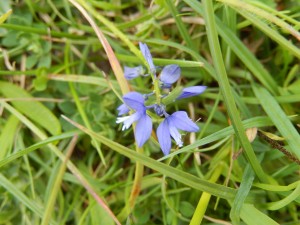
The hill is also host to Chalk Fragrant Orchid, Pyramidal Orchid, Spotted Orchid and more: it was lovely to see them all, though we were moved on swiftly by an anxious pair of Skylarks circling rather low overhead, trying to get back down to their nest, clearly not far from where we were sitting. All around in the thorn bushes were Tree Pipits, singing away, with some twittering Goldfinches and one Yellowhammer, my first of the year: yet another species that was once commonplace in every hedge.
Today I gave my ‘Camouflage without Spots’ talk at Gunnersbury Triangle nature reserve. It was very hot, and having helped the RSPB local group set up their stall at the Bedford Park Festival on the common, I cooled off and picked up the materials for the talk.
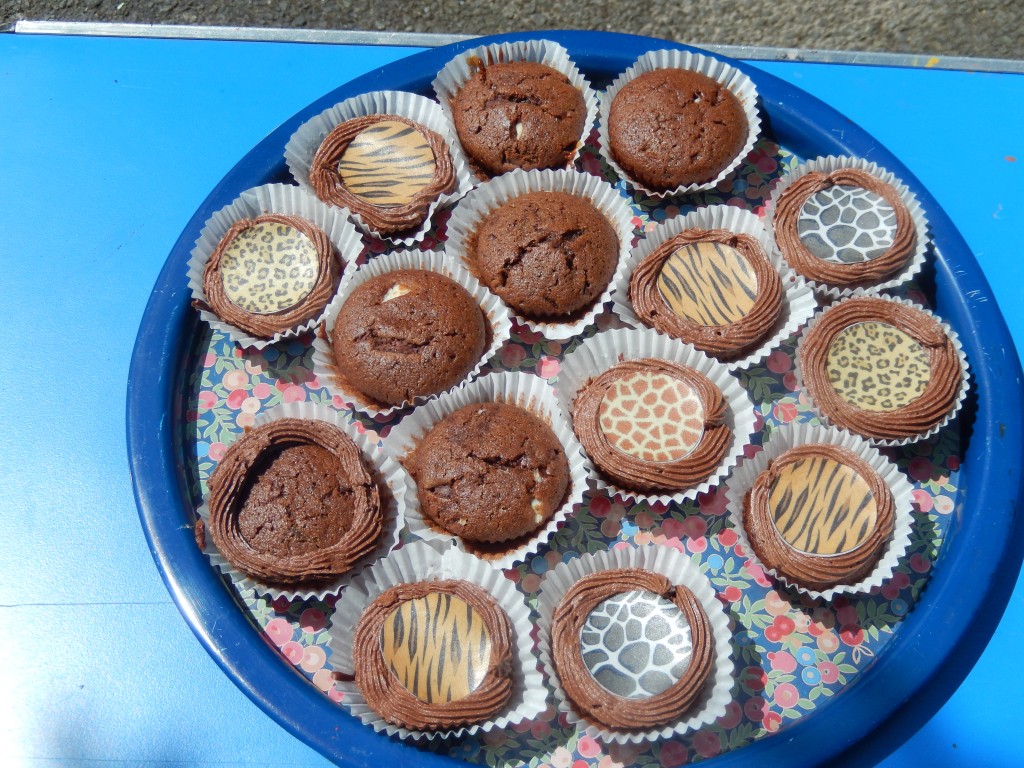
Helen had set out the tables and baked some amazing Camouflage Cakes – someone joked they couldn’t see them – and we all had lemonade in the heat.
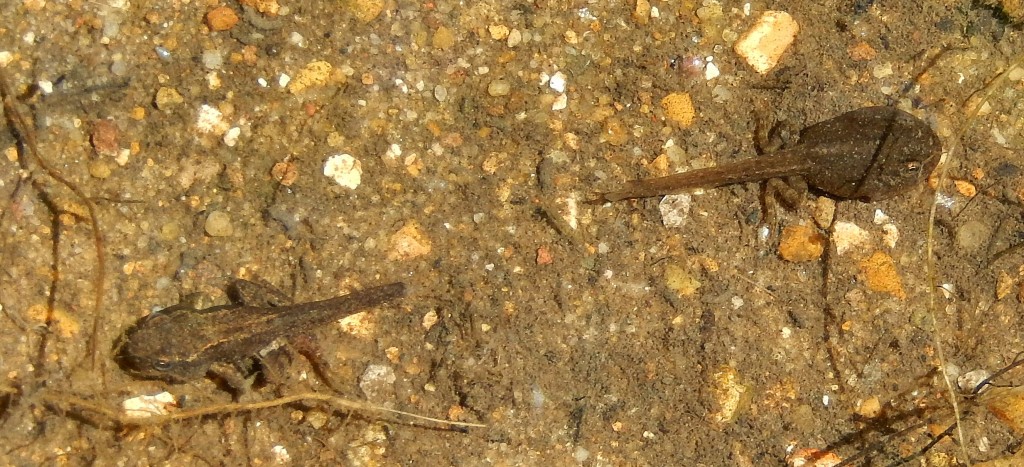
Once I had run through the talk and arranged the talk table with books and materials, I had a quick walk around the reserve. The tadpoles are just at the moment of growing legs – some have none, some two, some four: it’s very beautiful and touching.
A keen entomologist came running, a Clouded Yellow presumably blown in on the warm southerly wind had breezed across the reserve in front of the hut! They are only occasional visitors here, common enough in France, but they hardly ever perch when the weather is warm.
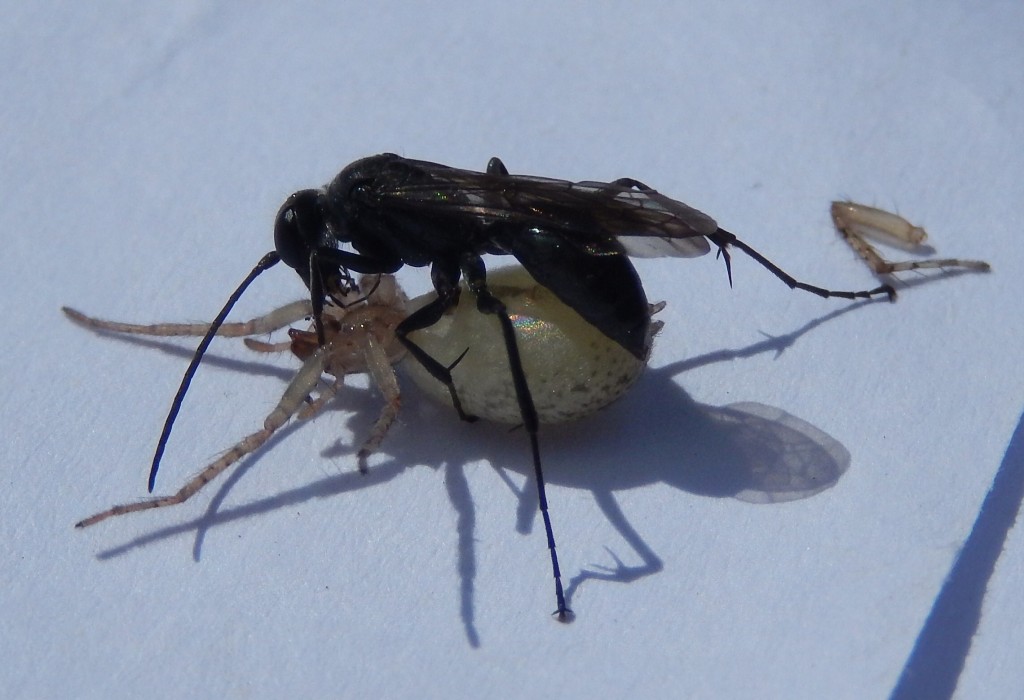
A second entomological excitement: a Pompilid spider-hunting wasp was running rapidly about on some papers in the hut, dragging something white below her body. The photo shows what the naked eye could hardly perceive: she had a paralysed spider as big as herself in her jaws (a leg has broken off). She was presumably running about to find a suitable hole to bury the unlucky spider in, complete with one of her own eggs which will hatch and eat the spider as a supply of fresh, living food, enough to keep it going until it pupates.
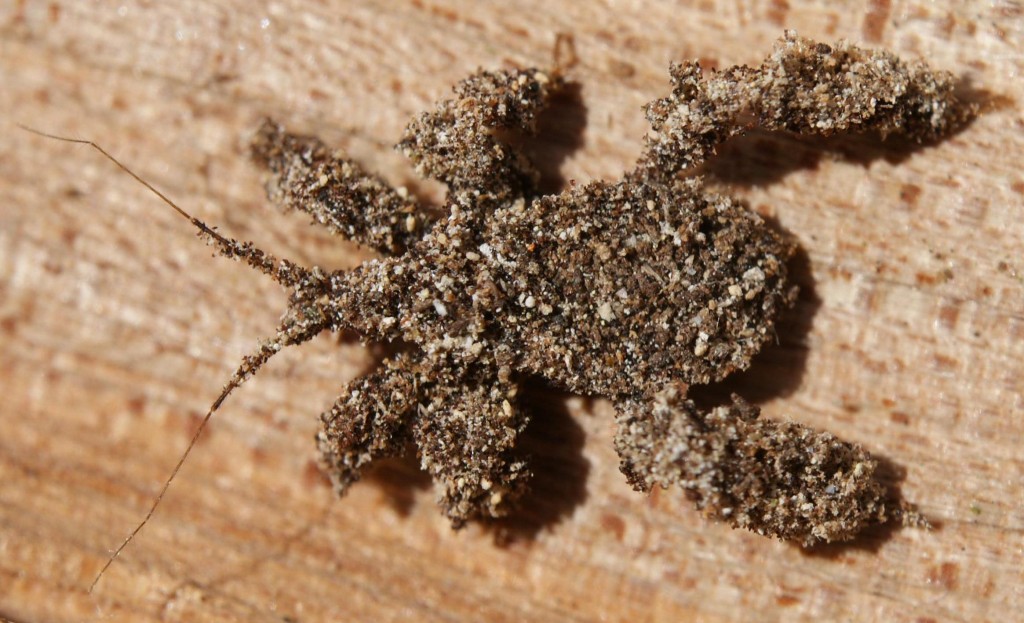
A surprisingly large audience congregated for the talk, which looked at tricks that animals use to conceal themselves, often in plain sight. I demonstrated using painted cylinders in the fortunately bright sunlight how countershading works and why it is necessary; and how some animals like skunks and honey badgers use it in reverse to make themselves as conspicuous as possible. We all marvelled together at the wonderful camouflage of the Masked Hunter Bug, the Flat-tail Horned Lizard, and perhaps best of all the Potoo, beloved of Hugh Cott, motionless with its astonishing disruptive markings in the fork of a tree. I risked bringing out my copy of Abbott Thayer’s Concealing-Coloration in the Animal Kingdom, complete with his fine but sadly misguided paintings of camouflaged Peacock, Roseate Spoonbills and Wood Duck. He was right about the principle of countershading, and the superb disruptive plumage of gamebirds, though.
Then we had more lemonade and ate the camouflaged cakes!
See also the blog article that trailed the talk.